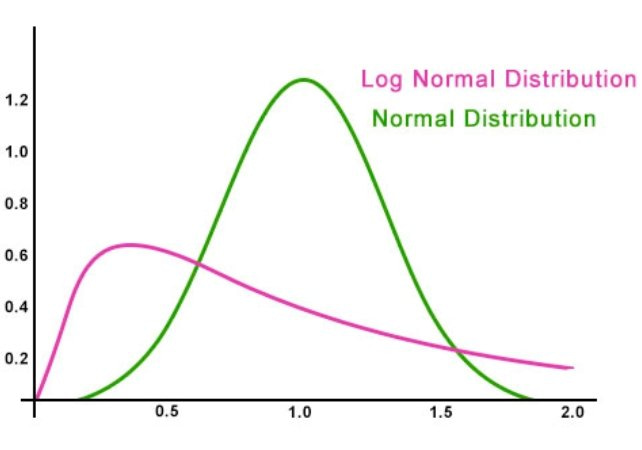- Scientists find a math pattern guiding neuron placement in brains.
- Math helps understand how neurons are placed, affecting how brains work and connect.
- Discoveries could lead to new ways to understand and treat brain issues.
Scientists working on the Human Brain Project have discovered a mathematical principle that controls how neurons are distributed throughout our brains.
Table of Contents
The Building Blocks of Brain Structure
The rule, which forecasts the distribution of neurons across the brain, may aid researchers in building accurate models to comprehend brain function and devise novel therapies for neurological illnesses.
In the fascinating field of statistics, every continuous random variable you study will frequently have a logarithm that resembles a lognormal distribution. A bell-shaped curve, although wider than in a normal distribution, can be used to represent this distribution, which is defined by the mean and standard deviation.
Understanding the Math Lognormal Distribution
The number of neurons in distinct mammals’ outer layers of neural tissue reflects a lognormal distribution, according to a team of researchers from the Jülich Research Center and the University of Cologne in Germany.
Asymmetry and a heavy right-skewed tail of the lognormal distribution, caused by a large number of tiny values and a small number of considerably big values, contrast with the symmetry of the normal distribution bell curve, which is a basic yet crucial distinction in mathematics.

A nation’s population is often distributed lognormally, with a few very big cities and a huge number of smaller towns and villages.
Implications for Human Brain Function
Neuron number and configuration determine brain shape and function. Within the cerebral cortex, the outermost layer of tissue, there are significant variations in the density of neurons in various locations and layers.
“Neuroclinic distribution of neuron densities affects network connectivity,” explains Jülich Research Center neuroscientist Sacha van Albada.
“For instance, if the density of synapses is constant, regions with lower neuron density will receive more synapses per neuron.”
Although much remains unclear regarding the statistical distributions of neuron density, study has undoubtedly taught us fascinating things about the biological tissues of our brain.
The group employed nine open-source datasets—which included information on seven distinct species—to carry out their research, including mouse, marmoset, macaque, galago, owl monkey, baboon, and human. When the density of neurons in various cortical regions were analyzed, a similar pattern of a lognormal distribution became apparent.
“Our results are in agreement with the observation that surprisingly many characteristics of the brain follow lognormal distributions,” according to the paper’s authors.
A logJust as a normal distribution naturally arises from the addition of numerous independent variables, it also naturally results from multiplying processes.
Co-leading the research as part of his PhD in computational neuroscience at the Jülich Research Centre, Alexander van Meegen says, “It emerges when taking the product of many independent variables, which is one reason why it may be very common in nature.”
According to the researchers, the structure of the cortex may have developed as a result of development or evolution and is unrelated to computation.
However, prior studies indicate that variations in brain neural networks may be more than just a coincidence and could even actively aid animals in adapting to their changing surroundings. Furthermore, the lognormal distribution may have a purpose given that the same arrangement is observed in most regions of the cortex and across species.
Co-lead author Aitor Morales-Gregorio, a computational neuroscientist at the Jülich Research Center, says, “We cannot be sure how the lognormal distribution of neuron densities will influence brain function, but it will likely be associated with high network heterogeneity, which may be computationally beneficial.”
Researchers are hoping that this finding may clarify how the brain learns new information as well as how it stores and recalls existing information. It might open the door for the development of novel medications that target particular brain regions in the ongoing search for efficient treatments for brain disorders.
As the Human Brain Project draws to an end, it has provided us with some fascinating discoveries during its ten years of work to create a common research infrastructure for advancing neuroscience, computing, and brain-related medicine.
The study has been published in the Cerebral Cortex.